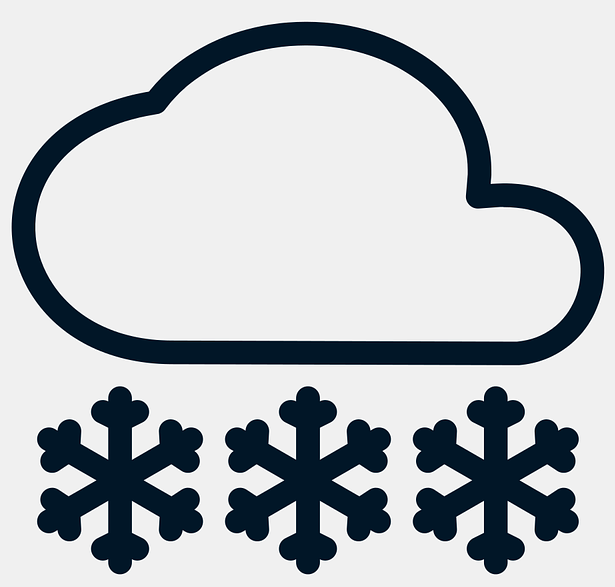
How accurate is snow day calculator it’s a big question when you check snow day calculator. Predicting snow days has always been a bit of a gamble. Winter storms are notoriously unpredictable, making it challenging to anticipate school closures or disruptions due to inclement weather. However, with the advent of technology, the Snow Day Calculator has emerged as a handy tool, claiming to forecast the likelihood of a snow day. But just how accurate are these predictions?
Understanding How Accurate is Snow Day Calculators
Snow Day Calculators utilize various data points, algorithms, and historical weather patterns to estimate the probability of a snow day occurrence. They consider factors like location, weather conditions, school district specifics, and even historical data to provide a prediction. However, despite their sophisticated algorithms, these tools aren’t infallible.
Factors Influencing Accuracy
- Weather Unpredictability: Weather patterns can be erratic, especially during winter. A slight shift in temperature or wind direction can significantly impact snowfall predictions, affecting the calculator’s accuracy.
- Local Variances: Snow Day Calculators rely on general geographical data, which might not account for microclimates or specific local weather conditions. This limitation can sometimes lead to discrepancies in predictions.
- Algorithm Complexity: While these calculators use complex algorithms, the accuracy heavily relies on the data quality they process. Inaccurate or incomplete data inputs can skew the results.
Real-Life Accuracy
Users’ experiences with Snow Day Calculators vary. Some users report high accuracy, stating that the predictions align closely with actual snow day occurrences. However, others have had less favourable experiences, finding the predictions inconsistent or inaccurate.
Improving Accuracy
- Provide Accurate Data: Inputting precise information, including the correct location, weather conditions, and school district details, can significantly improve the accuracy of predictions.
- Understanding Algorithm Insights: While the inner workings of these calculators might be complex, understanding the factors they consider can help users interpret the predictions more effectively.
Factors Contributing to Varied Accuracy
Meteorological Complexity
Weather forecasting, even with advanced technology, remains a complex endeavor. Snow Day Calculators rely on meteorological data and historical patterns, but the intricate nature of weather systems introduces inherent uncertainties. Small changes in atmospheric conditions can lead to significant alterations in predicted outcomes.
Geographical Specifics
While Snow Day Calculators aim to encompass a broad range of locations, the accuracy might vary based on regional intricacies. Certain areas might experience unique weather patterns or localized conditions that aren’t fully accounted for in the calculators, impacting their predictive capabilities.
Algorithmic Limitations
The algorithms powering Snow Day Calculators are designed to process vast amounts of data swiftly. However, the accuracy heavily hinges on the quality and completeness of the input data. In some instances, limitations in data availability or algorithmic nuances can influence the precision of predictions.
Users’ Experiences and Testimonials
Real-life scenarios shared by users offer a spectrum of experiences regarding Snow Day Calculators. Some individuals praise the accuracy, attributing successful predictions that aligned closely with actual snow days. Conversely, others report discrepancies, highlighting instances where predictions didn’t match the weather-related outcomes.
Enhancing User Experience and Accuracy
Data Precision
Providing accurate and detailed information, such as the exact location, current weather conditions, and specific school district details, can significantly enhance the Snow Day Calculator’s accuracy.
Continuous Improvement
Developers and providers of these calculators continually refine their algorithms and incorporate feedback to improve accuracy. Updates and advancements in technology aim to enhance predictive capabilities over time.
Conclusion: Understanding the Role of Snow Day Calculators
Snow Day Calculators serve as valuable tools, offering insights into the potential occurrence of snow days. While they provide guidance, users should approach their predictions with awareness of their inherent limitations. Weather remains unpredictable, and these calculators, while useful, may not guarantee precise outcomes due to the complexities of meteorology.
In essence, Snow Day Calculators aid in preparedness, providing an estimate of the probability of a snow day. However, users should combine this information with their local weather knowledge and stay updated with official weather advisories for a comprehensive approach to planning.
Some related FAQs:
1. How reliable are Snow Day Calc?
Snow Day Calculators aim for accuracy by using data and algorithms, but weather remains inherently unpredictable, impacting results.
2. Can Snow Day Calculators predict for any location?
Most cover a wide range of locations, but variations in local weather conditions can affect accuracy.
3. What influences the accuracy of these calculators?
Factors like meteorological data, geographical specifics, and algorithm intricacies influence their predictions.
4. Are there tips to improve the Snow Day Calculator’s accuracy?
Precise data inputs, understanding the algorithm’s workings, and keeping abreast of updates can enhance accuracy.
5. Are Snow Day Calculators free to use?
Many offer basic services for free, while certain premium features might require payment.
